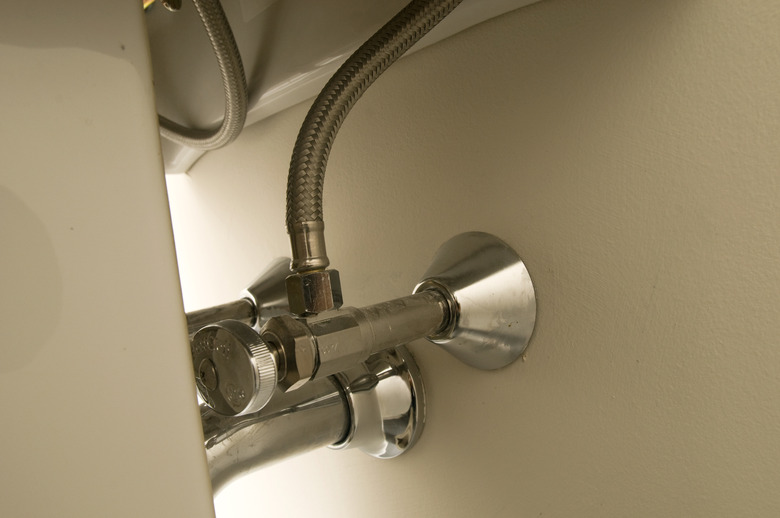What Causes A Braided Plumbing Line To Leak?
We may receive a commission on purchases made from links.
Braided plumbing lines connect supply valves to plumbing fixtures, such as faucets and toilets. The term braided refers to the line's exterior covering, a flexible sheath of woven metal. Leaks can occur at several parts of a braided plumbing line, usually because of punctures, deterioration, or prolonged stretching. If you learn to identify the cause of your braided line's leak, you can determine whether to repair it or replace it.
Tip
Braided lines may leak due to loose nuts, damage to the crimp collar or threads, or improper use of thread sealant. Avoid twisting the line to prevent cracking, which can also result in leaks.
Loose Nuts and Cracked Threads
Loose Nuts and Cracked Threads
Braided lines fasten to faucet inlets and valve outlets via threaded nuts. A washer inside each nut compresses against the outlet or inlet to form a watertight seal. A loose nut allows water to seep around the washer and leak at the joint between the nut and the threads.
An excessively tightened nut might crack threads and allow water to leak. In general, plumbers tighten braided lines' compression nuts approximately one-quarter rotation beyond hand tight. If the threads are damaged, a braided line needs replacement to ensure a secure seal.
Thread Sealant Issues
Thread Sealant Issues
Braided lines' compression threads differ in design from standard pipe threads. Whereas standard pipe threads require a coating of pipe thread sealant to create a watertight seal, braided lines' compression threads create a watertight seal with their plastic washers. Applied to compression threads, sealant might spread or jam threads to create a leak.
If you find thread sealant, also known as plumber's tape, on your braided line's threads, remove the nuts and clean the sealant from both the braided line and the valve or faucet inlet. In addition, check to make sure that the braided line connectors are the correct size for the fixture or appliance and water supply. Thread sealant can't fix mismatched connectors.
Crimp Collar Damage
Crimp Collar Damage
Supply line nuts connect to the body or hose of the assembly via a crimped collar. Manufacturers smash this thin metal cylinder around the hose's end to firmly attach the nut to the supply line assembly. Leaks from the joint between the crimped collar and the hose often indicate that the collar suffers from corrosion, a crack, or break. A braided line with a leak at its collar generally requires replacement.
Punctures and Hose Breaks
Punctures and Hose Breaks
Although constructed of sturdy steel, braided supply lines' metal sheathes occasionally crack or develop punctures. Excessive twisting often causes braided lines to crack. To prevent cracks from twisting, remove the braided line during plumbing repairs, rather than forcing it out of the way.
Several objects are capable of puncturing braided supply lines, including sharp tools and fasteners, such as nails and screws. Cracked or punctured supply line hoses generally require replacement.
Corrosion Due to Chemicals
Corrosion Due to Chemicals
In addition to mechanical issues, chlorinated water and the use of chlorine products around the braided line and connections can result in corrosion, which eventually leads to leaks and line failure. Inexpensive braided steel lines may use a lower grade of steel, which is susceptible to corrosion damage and premature failure. If there's any indication of leaks, consider replacing older braided steel lines, particularly around toilets where chlorinated cleaning products are often used, with new lines to avoid water damage to the property.
